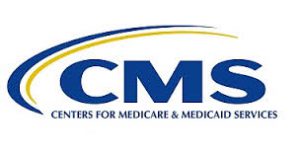EXCLUSIVE POST – Innovation in medical devices has been profound in recent years – cardiac devices are a good example. The combination of engineering advances to create small, strong and wear-resistant devices and computational advances with smaller and smaller semiconductors loaded with more and more information have led to truly amazing advances. With more and more people with more and more chronic illnesses, the need is great and the opportunities for innovators is high, leading to faster and more effective advances.
EXCLUSIVE POST – Innovation in medical devices has been profound in recent years – cardiac devices are a good example. The combination of engineering advances to create small, strong and wear-resistant devices and computational advances with smaller and smaller semiconductors loaded with more and more information have led to truly amazing advances. With more and more people with more and more chronic illnesses, the need is great and the opportunities for innovators is high, leading to faster and more effective advances. Today the advances in medical technologies are much greater than those in pharmaceuticals, with the possible exception of drugs developed from genomic databases. I will review just a few of the recently introduced devices – chosen no more scientifically than because I found them of interest and illustrative of what is being developed – and in the process suggest what may be on the horizon. Let’s look first at devices that can benefit those with heart problems.
Pacemakers continue to advance. They are smaller and much more capable. Essentially all can be programmed in myriad ways depending on the patient’s specific needs. Demand pacemakers can sense the onset of bradycardia by a drop in rate within just a few beats thus keeping the patient almost unknowing of the onset that otherwise would have caused a syncopal or “drop attack” episode. Multi-lead pacemakers can improve ventricular output of heart failure patients by synchronization of septal and lateral walls of the left ventricle and often the left atrium as well. These are found useful for heart failure patients with an ejection fraction below 35% and a prolonged QRS duration. Some newer pacemakers can respond to increased activity with rate increases by detecting motion in the body or increased temperature in the bloodstream. This “dynamic” pacing can be helpful in those with a heart transplant and perhaps with various artificial heart settings.
The implantable cardioverter-defibrillators are now commonly placed for those at risk for sudden death from ventricular fibrillation or tachycardia. Although there were concerns a few years go about broken leads and some deaths, the great majority of patients have had defect free ICDs with many lives saved. Indeed, many cardiologists believe that ICDs may be underutilized. Newer approaches are to implant the defibrillator subcutaneously (S-ICD) over the heart without leads. This has come as a result of advances in battery power yet smaller size along with advanced electronics making it possible to defibrillate the heart without a lead actually in the heart it self. Of course this eliminates the concern about faulty or broken implanted leads.
Left Ventricular Assist Devices can be used temporarily to give the heart a “rest” after damage until it can repair itself or be used for long periods while either waiting for a transplant to become available or as a lifetime device. There has been rapid progress. Early models were bulky and required an external pneumatic pumping system. Newer ones are much smaller, often smaller than a size D flashlight battery, use turbine-type propulsion and work on electrical energy which can come via a wire to an external rechargeable battery or via a transcutaneous induction system. More recently have come percutaneous placement of LVADs. This technology has shown great innovation and can be effective for short term hemodynamic support. In one model (Impella), the 4mm diameter device is advanced via the femoral artery to the left ventricle for blood intake which then passes though an axial flow pump and is expelled into the aorta, adding 2.5 to 3 liters of blood per minute to whatever the ventricle is already pumping.
Former vice president Richard Cheney, now age 70, is a living example of the advances in cardiac care for heart attacks and their sequela. His first heart attack was at age 37 while he was running for Congress and when the care was mostly supportive with watchful observation for arrhythmias in a CCU. Later he had angioplasty and stents placed. He has received new drugs as they became available such as statins, beta blockers and ACE inhibitors. He had a coronary artery bypass in 1988 after his third heart attack. Shortly after becoming vice president he had angioplasty and stent placement. During much of his term as vice president he had an implanted defibrillator. He was backing out of his garage in Wyoming when he blacked out but the defibrillator worked and he was back to normal in a brief time – but scared the Secret Service when his car bumped into a tree. He has had a LVAD in place for about a year and, in a Wall Street Journal interview in July 9, 2011, said that although he is not doing strenuous activities he can do most everything he wants. This after being at death’s door a year ago with unremitting heart failure before the LVAD placement. The interviewer noted that “a new advance, often unavailable even a few years before, has always outpaced the progress of his coronary artery disease and of his career”.
Mr. Cheney’s saga is a story about innovation and not surprisingly he is a big booster for continued innovation yet he understands that the advances he has benefited from are not universally available. “We’ve got a system that provides for the kind of research and innovation that has provided these tremendous capabilities. That automatically raises questions about how we deliver to everybody who needs it. . . .I don’t think there’s any way not to have that debate about how much we’re going to spend on health care. We’ve got big budget problems, big national debt problems. . . . In finding our way forward, we’ve got to be able to find ways to deliver the quality care that everyone expects and that we’re capable of providing to the maximum number of people.”
These innovative cardiac devices are certainly lifesaving and life enhancing as the vice president’s story demonstrates. Yet, each and every one is expensive and so it is imperative to use them only when truly appropriate; otherwise they will only increase the cost of care while not offering a true benefit to the patient. The need of course is recognizing the right circumstances with the right patient while never denying a potentially lifesaving or life enhancing option when appropriate. And that is not always easy. Your comments and suggestions would be valued.
Stephen C Schimpff, MD is an internist, professor of medicine and public policy, former CEO of the University of Maryland Medical Center and consults for the US Army, medical startups and Fortune 500 companies. He is the author of The Future of Medicine – Megatrends in Healthcare. Updates are available at http://medicalmegatrends.blogspot.com








